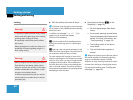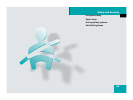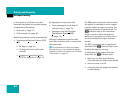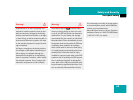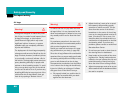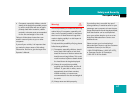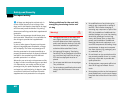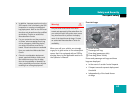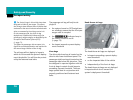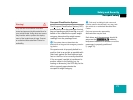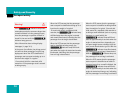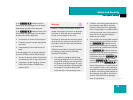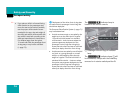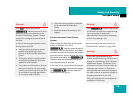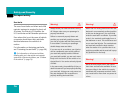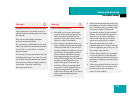
70
Safety and Security
Occupant safety
The air bags will not deploy in impacts
which do not exceed the system’s deploy-
ment thresholds. You will then be protect-
ed by the fastened seat belts.
The passenger air bag will only be de-
ployed if
ț the system, based on OCS weight sen-
sor readings, senses that the front pas-
senger seat is occupied
ț the 75 indicator lamp in
the center console is not lit
(
୴ page 74)
ț the impact exceeds a preset deploy-
ment threshold
Knee bags
The driver-side knee bag is located on the
driver’s side lower instrument panel. The
passenger-side knee bag is located on the
passenger side below the glove box. They
are designed to operate together with the
front air bags in certain frontal impacts
exceeding a preset threshold. The knee
bags operate best in conjunction with
properly positioned and fastened seat
belts.
Head-thorax air bags
1 Head-thorax air bag
The head-thorax air bags are deployed
ț in impacts exceeding a preset deploy-
ment threshold
ț on the impacted side of the vehicle
ț independently of the front air bags
The head-thorax air bags are not deployed
in impacts which do not exceed the
system’s deployment threshold.
i
The front air bags in this vehicle have been
designed to inflate in two stages. This allows
the air bag to have different rates of inflation that
are based on the rate of relevant vehicle deceler-
ation as assessed by the air bag control unit.
On the passenger side, the front air bag
deployment is additionally influenced by the
passenger’s weight category as identified by the
Occupant Classification System (OCS)
(
୴ page 71).
The lighter the passenger side occupant, the
higher the vehicle deceleration rate required for
the second stage inflation of the air bag.



